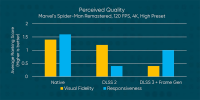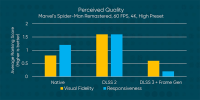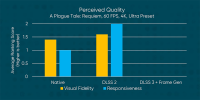DegustatoR
Legend
DLSS3 frames are "real" frames to the OS or any other tool. You can limit them but you can't control the "native" framerate this way. Possibly something for Nv to add to drivers though?Can you use a frame rate limiter to limit the framerate to say 70fps and then use DLSS3 to double it? Obviously that's probably a waste if you can get to near 144fps without frame generation anyway. Although if you throw on max DLDSR I assume you could restrain even the 4090 enough.





